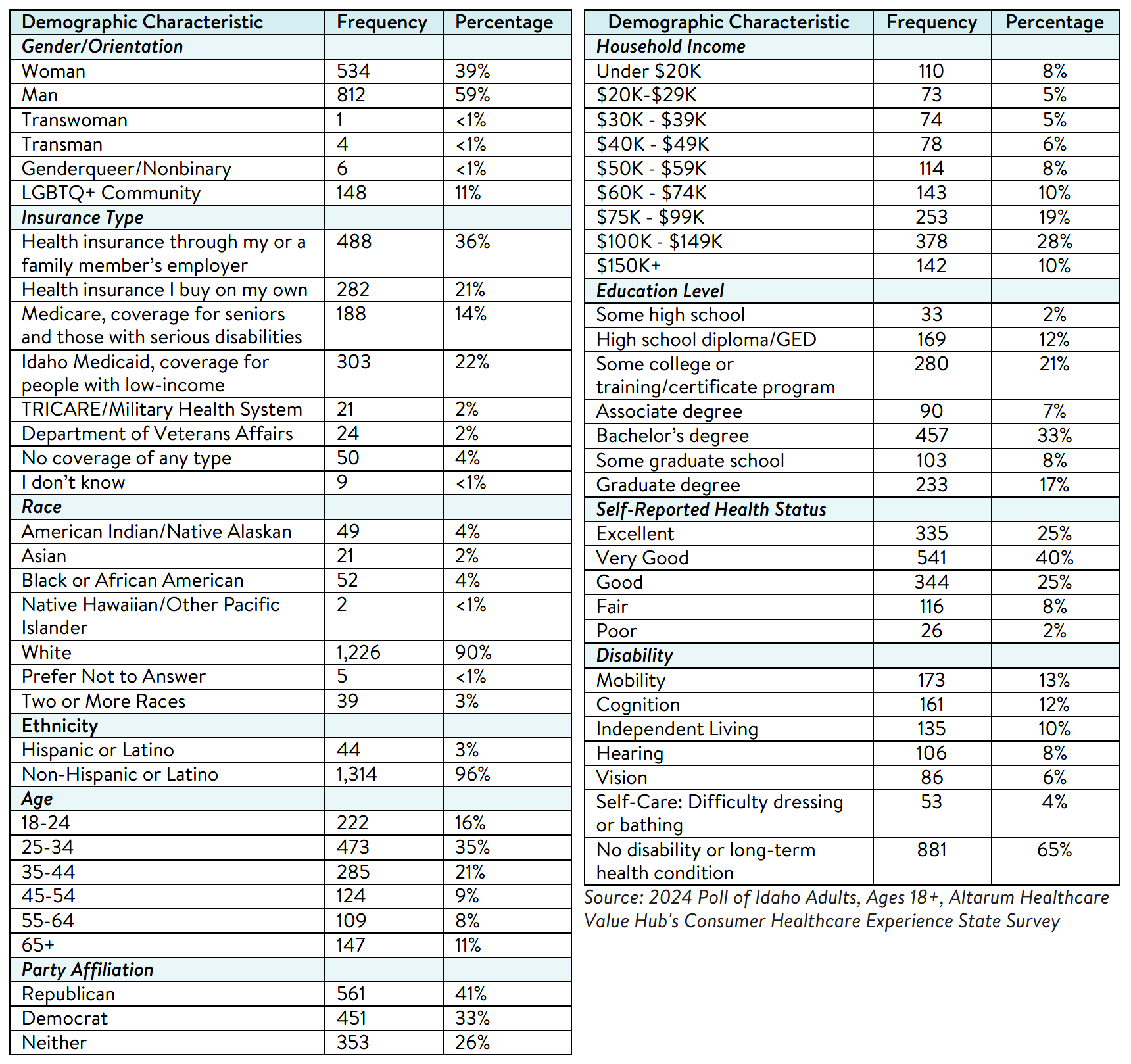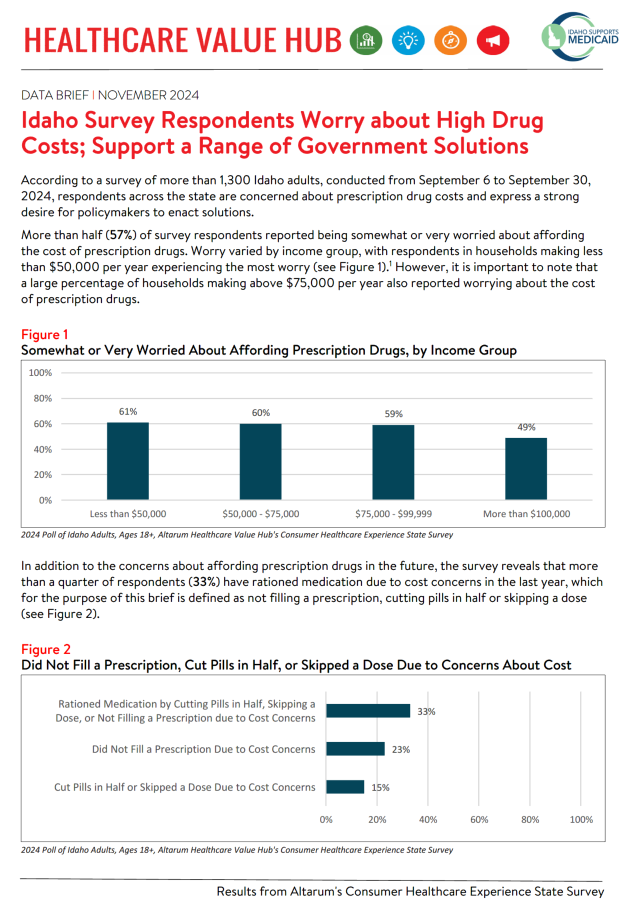Idaho Survey Respondents Worry about High Drug Costs; Support a Range of Government Solutions
According to a survey of more than 1,300 Idaho adults, conducted from September 6 to September 30,
2024, respondents across the state are concerned about prescription drug costs and express a strong
desire for policymakers to enact solutions.
More than half (57%) of survey respondents reported being somewhat or very worried about affording
the cost of prescription drugs. Worry varied by income group, with respondents in households making less
than $50,000 per year experiencing the most worry (see Figure 1).1 However, it is important to note that
a large percentage of households making above $75,000 per year also reported worrying about the cost
of prescription drugs.
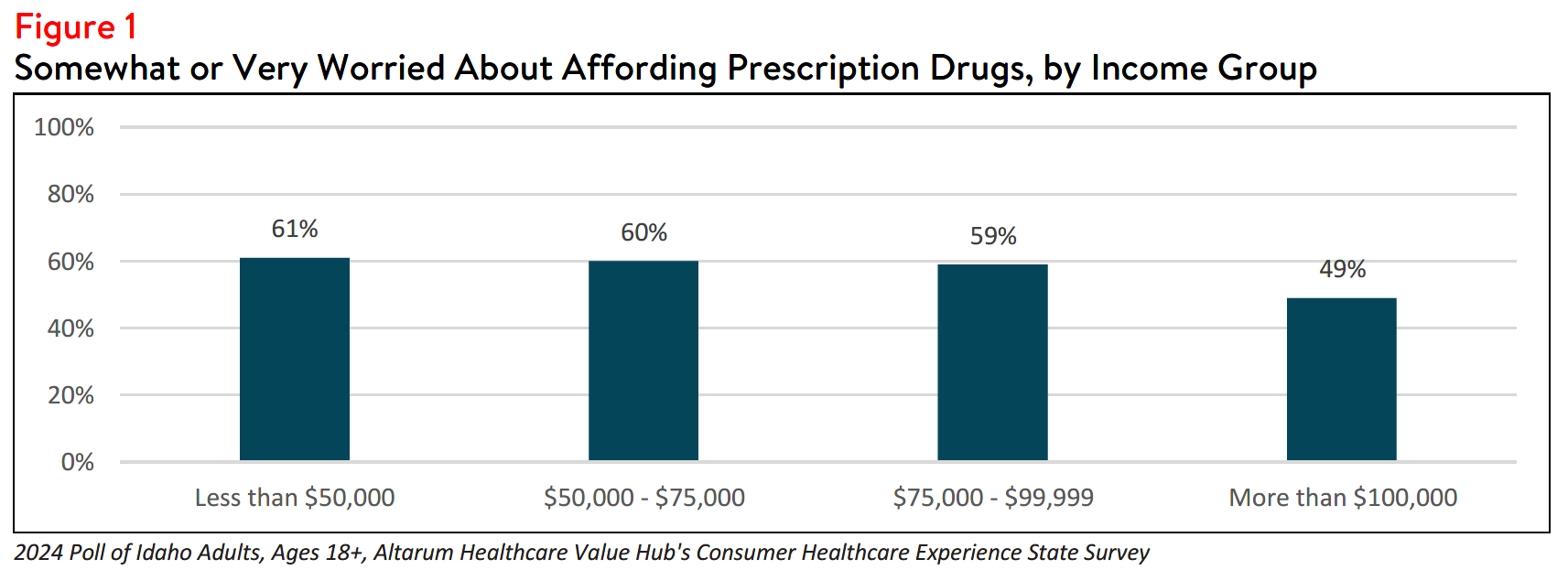
In addition to the concerns about affording prescription drugs in the future, the survey reveals that more
than a quarter of respondents (33%) have rationed medication due to cost concerns in the last year, which
for the purpose of this brief is defined as not filling a prescription, cutting pills in half or skipping a dose
(see Figure 2).
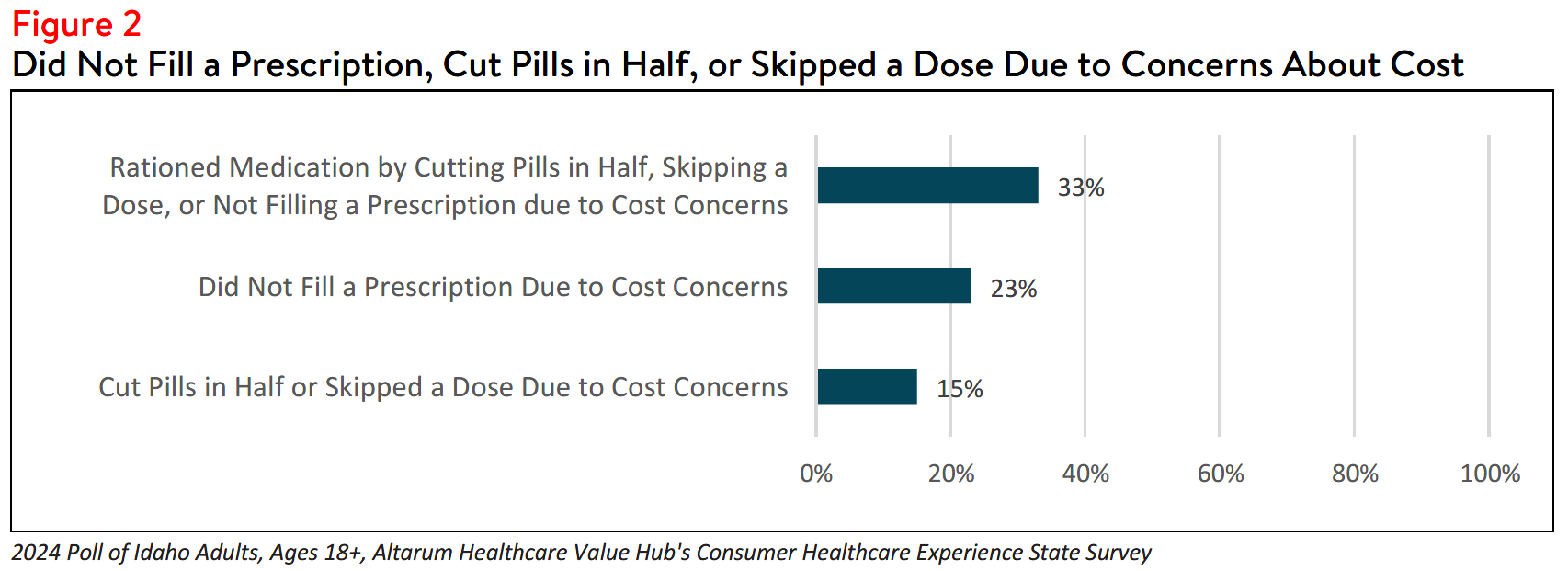
Low-income respondents and respondents enrolled in Idaho’s Medicaid program, reported high rates of
rationing medications due to cost. However, these hardships are also prevalent in middle-income
households. Also of note, respondents living in households with a person with a disability reported higher
rates of rationing medication due to cost when compared to respondents without a disabled household
member (see Table 1).
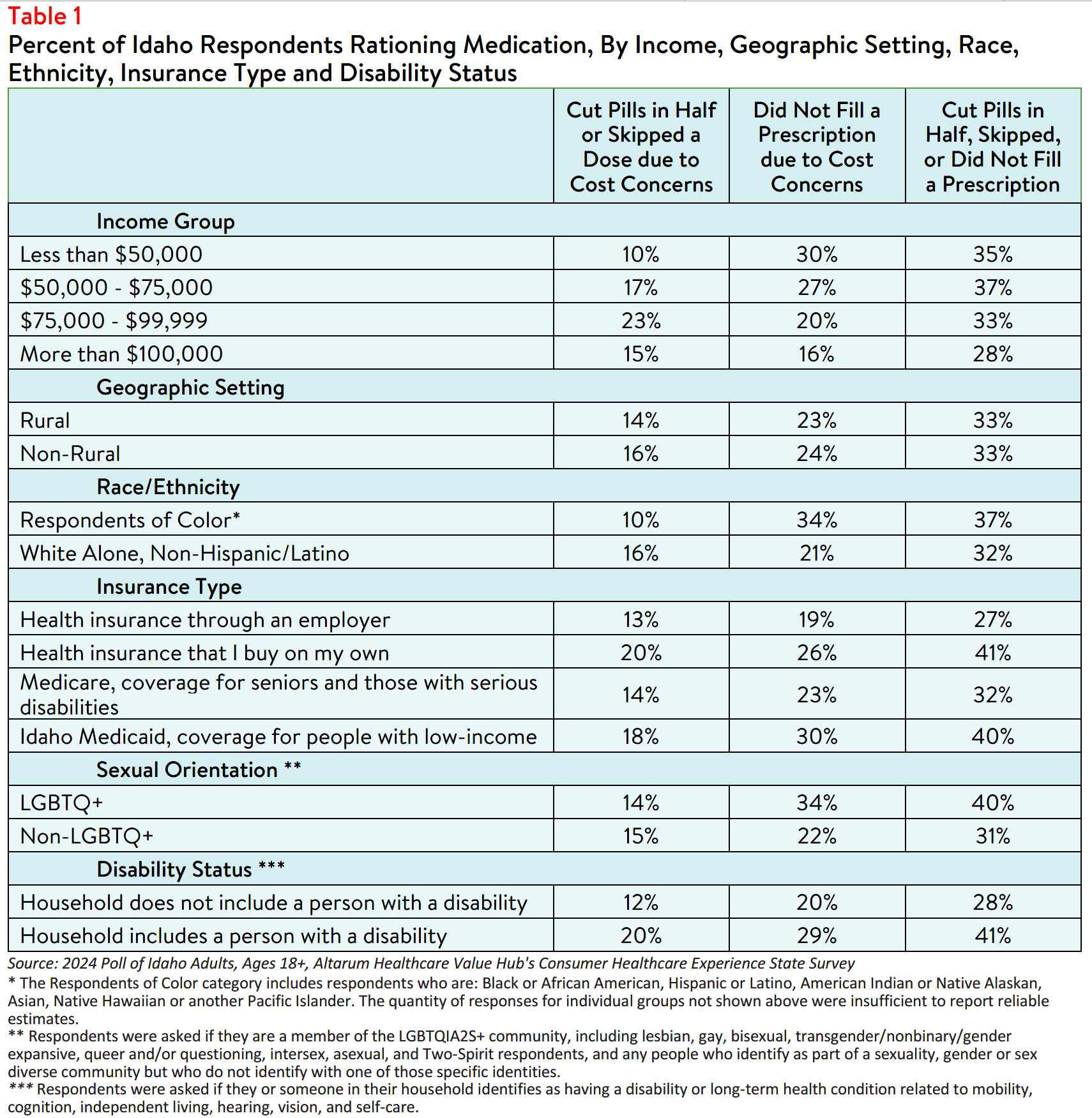
Despite Idaho’s Medicaid program, eliminating copays for covered prescription drugs, respondents
enrolled in the program still reported high rates of rationing medication due to cost. When asked to
elaborate on the conditions which led them to ration or forgo care, respondents provided a variety of
examples including the medication not being covered and challenges meeting prior authorization
requirements (see Table 2).

Considering the challenges respondents reported concerning prescription drug affordability, as well as
concerns about high health care costs generally,2 it is not surprising that Idaho respondents are generally
dissatisfied with the health care system. In fact, just 38% of respondents agreed or strongly agreed that
the United States health care system is “great,” while 68% agreed or strongly agreed that the United
States health care system needs to change.
Idaho respondents also frequently reported that they believe that pricing decisions made by drug
companies are a major reason for high health care costs. In fact, out of fifteen options, the most
frequently cited reasons for high health care costs were:
- 64% — Drug companies charging too much money
- 63% — Insurance companies charging too much money
- 62% — Hospitals charging too much money
When it comes to tackling high drug costs, Idaho respondents endorsed a number of prescription drug-
related strategies, including:
- 91% — Cap out-of-pocket costs for life-saving medications, such as insulin;
- 90% — Authorize the Attorney General to take legal action to prevent price gouging;
- 90% — Set standard prices for drugs to make them affordable;
- 89% — Prohibit drug companies from charging more in the U.S. than abroad; and
- 88% — Establish a Prescription Drug Affordability Board to examine evidence and establish acceptable costs for prescription drugs.
Moreover, there is bipartisan support for a variety of policies designed to address unaffordable
prescription drug costs. For example, (92% of) respondents agreed that drug companies should be
required to provide advance notice of price increases and to provide information to justify those
increases, including 93% of respondents identifying as a Republican, 94% of respondents identifying as a
Democrat and 90% of unaffiliated respondents (see Table 3).
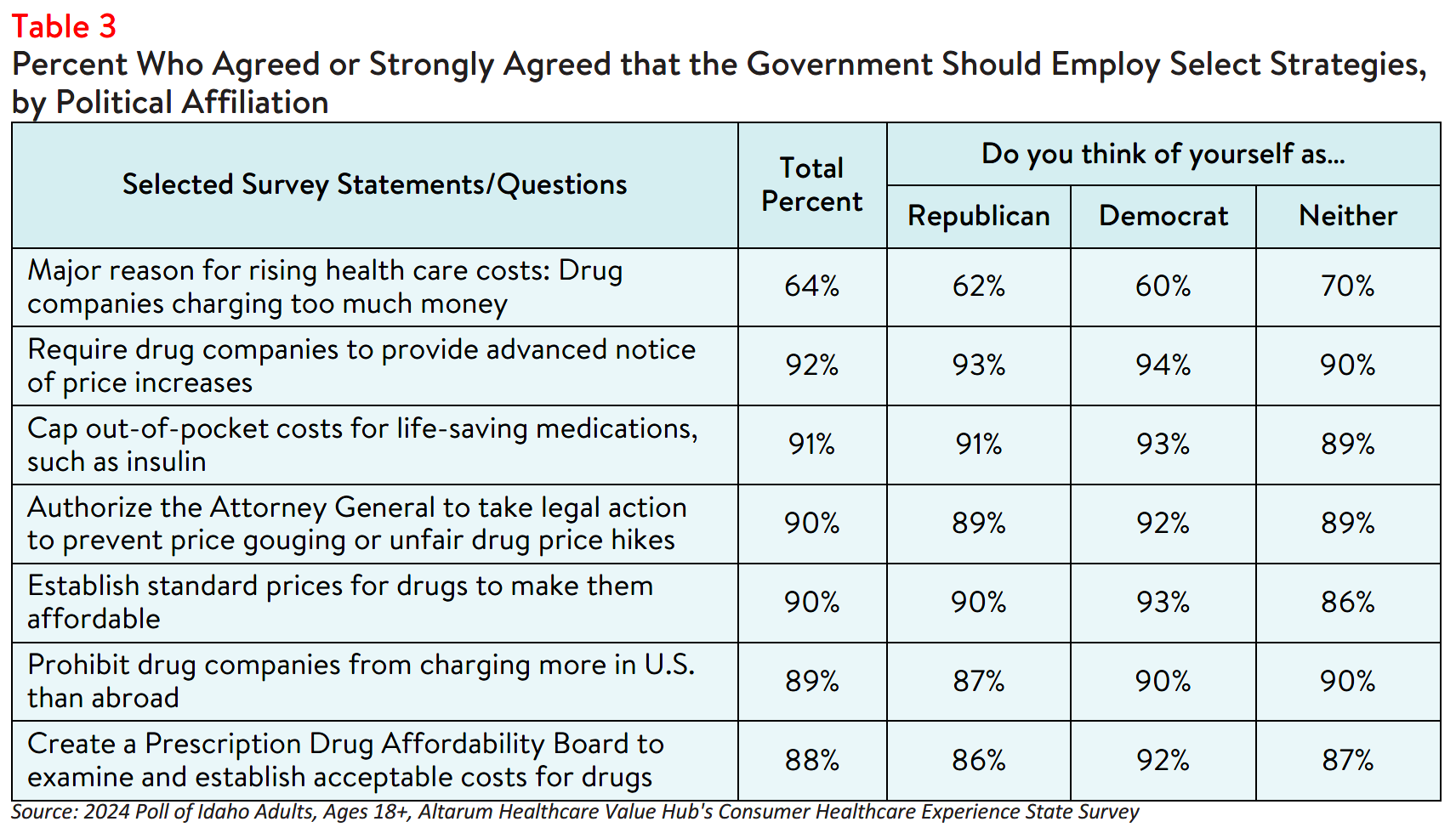
While Idaho respondents overwhelmingly support government action to address high drug costs, they also see a role for themselves. Sixty-seven percent (67%) would switch from a brand-name to an equivalent generic drug if given the chance, and 62% have sought or attempted to find the cost of a prescription drug beforehand.
Conclusion
The high burden of health care and prescription drug affordability, along with high levels of support for
change, suggests that elected leaders and other stakeholders need to make addressing this consumer
burden a top priority. Recent legislative action at both the federal and state levels may positively impact
consumer affordability, specifically for prescription drugs used to treat chronic conditions such as insulin,
epinephrine autoinjectors, and asthma inhalers. Annual surveys can help assess whether progress is being made.
Notes
-
Median household income in Idaho was $70,214 (2018-2022). U.S. Census, Quick Facts. Retrieved from: U.S. Census Bureau QuickFacts: Idaho
-
For more detailed information about healthcare affordability burdens facing Idaho respondents, please see Healthcare Value Hub, Idaho Residents Struggle to Afford High Health Care Costs; Worry About Affording Health Care in the Future; Support Government Action across Party Lines, Data Brief (November 2024).
Methodology
Altarum’s Consumer Healthcare Experience State Survey (CHESS) is designed to elicit respondents’ views on a wide range of health system issues, including confidence using the health system, financial burden and possible policy solutions. This survey, conducted from September 6 to September 30, 2024, used a web panel from Dynata with a demographically balanced sample of approximately 1,300 respondents who live in Idaho. Information about Dynata’s recruitment and compensation methods can be
found here. The survey was conducted in English or Spanish and restricted to adults ages 18 and older. Respondents who finished the survey in less than half the median time were excluded from the final sample, leaving 1,365 cases for analysis. After those exclusions, the demographic composition of respondents was as follows, although not all demographic information has complete response rates:
